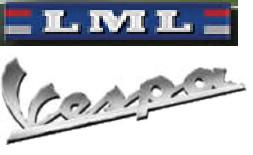A Vespa rally is possibly one of the stranger things you'll ever see. The premise is similar to any other rally race; the competitors race through a course, around obstacles and sometimes the course itself is the obstacle. There are several Vespa rally races held each year in the United States. Races are held in Las Vegas, Salt Lake City, San Francisco and Seattle. Of the Vespa rally races mentioned, only the race in Las Vegas has an off-road ride.
Instructions
Things You'll Need:
- A Vespa, though some rally races will allow other makes of scooter
- A valid motorcycle license and insurance
- Standard safety gear like a helmet and goggles
- A copy of your registration paperwork
- Entry fee
- Time off from work
- A means of transporting your Vespa to the site of the rally race
-
Step 1Choose which Vespa rally race you'll be attending. Most information can be found online at the organizer's website.
-
Step 2Preregister as soon as you can. Many of the rally races fill up quickly, so get your registration in quickly. Most organizer's will allow you to pay your registration fee with a credit card online.
-
Step 3Check the state laws concerning Vespas and other scooters. Doing this will make sure you're in compliance with the law and have all the required safety gear and paperwork. Most of the time this can also be found on the organizer's website.
-
Step 4Arrange a way to get your Vespa or scooter to the race. You may have to rent a truck, though if you own a pick up truck you'll have nothing to worry about. You may be able to ride with another competitor who has room to spare for you and your Vespa.
-
Step 5Tune up your Vespa. If your scooter's not road-worthy, don't compete until it is. Sitting on the side of the road, waiting for a ride is no way to compete in a rally race.
-
Step 6Allow for drive time and potential set backs. Build in extra time just to be safe.
-
Step 7Go to the meet and greet. In addition to handing out goodies, there is usually free food and important information about the race.
-
Step 8Compete in the rally race. Follow the map or directions you're given and have fun.
Remember that the rally's sponsor and organizers are not responsible for any injury you sustain. You are on your own, and you are responsible for your own actions.
Follow the instructions of the race organizers; these are designed for all Vespa drivers to have as much fun as possible.



